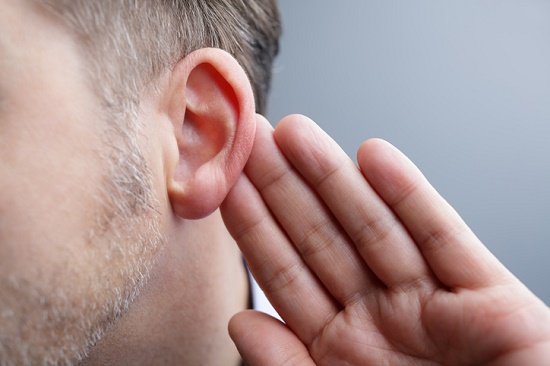
Your chances of acquiring hearing loss at some point in your life are regretfully very high, even more so as you get older. In the US, 48 million people report some level of hearing loss, including nearly two-thirds of adults age 70 and older.
That’s why it’s vital to understand hearing loss, so that you can detect the signs and symptoms and take precautionary measures to prevent damage to your hearing. In this blog post, we’re going to concentrate on the most widespread type of hearing loss: sensorineural hearing loss.
The three forms of hearing loss
Generally speaking, there are three types of hearing loss:
- Conductive hearing loss
- Sensorineural hearing loss
- Mixed hearing loss (a mix of sensorineural and conductive)
Conductive hearing loss is less common and is the result of some type of blockage in the outer or middle ear. Common causes of conductive hearing loss include impacted earwax, ear infections, benign tumors, perforated eardrums, and hereditary malformations of the ear.
This article will focus on sensorineural hearing loss as it is by far the most common.
Sensorineural hearing loss
This type of hearing loss is the most prevalent and makes up about 90 percent of all documented hearing loss. It results from injury to the hair cells (nerves of hearing) of the inner ear or to the nerves connecting the inner ear to the brain.
With sensorineural hearing loss, sound waves enter the outer ear, strike the eardrum, and reach the inner ear (the cochlea and hair cells) as normal. However, on account of destruction to the hair cells (the tiny nerve cells of hearing), the sound signal that is sent to the brain for processing is diminished.
This diminished signal is perceived as faint or muffled and normally has an effect on speech more than other types of lower-pitched sounds. Additionally, contrary to conductive hearing loss, sensorineural hearing loss is usually permanent and can’t be corrected with medicine or surgery.
Causes and symptoms
Sensorineural hearing loss has various potential causes, including:
- Genetic disorders
- Family history of hearing loss
- Meniere’s Disease or other disorders
- Head injuries
- Benign tumors
- Exposure to loud noise
- The aging process (presbycusis)
The last two, direct exposure to loud noise and the aging process, constitute the most common causes of sensorineural hearing loss, which is honestly good news as it shows that the majority of cases of hearing loss can be avoided (you can’t avoid aging, of course, but you can regulate the collective exposure to sound over your lifetime).
To fully grasp the signs and symptoms of sensorineural hearing loss, you should keep in mind that injury to the nerve cells of hearing usually occurs very gradually. Therefore, the symptoms progress so slowly and gradually that it can be nearly impossible to detect.
A slight amount of hearing loss each year will not be very recognizable to you, but after many years it will be very apparent to your friends and family. So while you may think that everyone is mumbling, it may be that your hearing loss is catching up to you.
Here are some of the signs and symptoms to look for:
- Trouble understanding speech
- Difficulty following conversions, especially with more than one person
- Turning up the television and radio volume to unreasonable levels
- Continually asking other people to repeat themselves
- Experiencing muffled sounds or ringing in the ears
- Becoming exceedingly exhausted at the end of the day
If you detect any of these symptoms, or have had people inform you that you might have hearing loss, it’s best to schedule a hearing test. Hearing tests are quick and painless, and the earlier you treat hearing loss the more hearing you’ll be able to retain.
Prevention and treatment
Sensorineural hearing loss is largely preventable, which is good news since it is without question the most common type of hearing loss. Millions of cases of hearing loss in the US could be avoided by adopting some simple protective measures.
Any sound above 80 decibels (the volume of city traffic inside your car) can potentially damage your hearing with long-term exposure.
As the decibel level increases, the amount of time of safe exposure decreases. As a result, at 100 decibels (the volume of a rock concert), any exposure over 15 minutes could harm your hearing.
Here are a few tips on how you can protect against hearing loss:
- Use the 60/60 rule – when listening to a portable music player with headphones, listen for no more than 60 minutes at no more than 60 percent of the max volume. Additionally, think about purchasing noise-canceling headphones, as these will require lower volumes.
- Shield your ears at concerts – concerts can vary from 100-120 decibels, far above the ceiling of safe volume (you could harm your hearing within 15 minutes). Limit the volume with the aid of foam earplugs or with musician’s plugs that maintain the quality of the music.
- Protect your ears at work – if you work in a loud occupation, check with your employer about its hearing protection program.
- Protect your hearing at home – a variety of household and leisure activities generate high-decibel sounds, including power saws, motorcycles, and firework displays. Always use ear protection during extended exposure.
If you currently have hearing loss, all is not lost. Hearing aids, while not able to completely restore your hearing, can substantially improve your life. Hearing aids can enhance your conversations and relationships and can forestall any additional consequences of hearing loss.
If you think you might have sensorineural hearing loss, book your quick and easy hearing test today!
